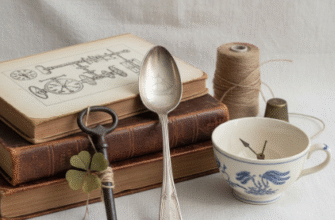From the moment humanity first noticed the vibrant splash of color against the green backdrop of the natural world, flowers and plants have been more than mere botanical specimens; they’ve been silent communicators. They possess a secret language, one rich with symbolism, emotion, and unspoken messages, that has been cultivated across centuries and cultures. This hidden lexicon, known historically as floriography, allowed people to express sentiments too delicate, profound, or perilous for direct speech.
The practice truly blossomed into a formalized art during the Victorian Era in England and America, where societal constraints on emotional expression were particularly rigid. A simple bouquet was transformed into a complex, coded missive. The choice of bloom, its color, its condition, and even the way it was presented or received could alter the entire meaning. To send an ivy-wrapped posy of red roses and forget-me-nots was to pledge eternal, true love and remembrance, while a yellow rose sent a less flattering message of jealousy or infidelity. Context was everything, and mastering this floral dialect was a social necessity for the well-bred.
The Roots of Floriography: A Global Dialogue
While the Victorians popularized the concept, the foundations of this botanical dialogue stretch back much further and across the globe. Ancient civilizations, from the Egyptians to the Chinese, imbued specific plants with mythological and religious significance. The lotus, for instance, became a potent symbol of purity, rebirth, and spiritual awakening in many Eastern traditions because it rises unsullied from muddy waters. In classical mythology, deities were often associated with certain flora; the narcissus, named after the Greek youth, became a symbol of vanity and self-absorption, a cautionary tale rendered in petals.
The renewed European interest in floriography in the 18th century is often credited to Lady Mary Wortley Montagu, who documented the salam or “language of objects” she encountered in the harems of Constantinople. This Turkish tradition of sending coded messages using flowers, fruits, and other small items inspired the formalization of the European floral dictionary. Suddenly, every garden became a potential library of emotion.
The comprehensive dictionaries that codified the language of flowers in the Victorian age were crucial for standardizing the meanings. Before these popular reference books, interpretations could vary wildly between regions and individuals. However, these printed guides solidified specific associations, making it possible for two people to exchange complex, nuanced messages with minimal risk of misunderstanding the chosen blooms.
Consider the humble daisy . In its simplicity, it speaks volumes. Its common meaning is innocence and purity, but its specific type matters. The white daisy is generally about youthful innocence, whereas the ‘Michaelmas Daisy’ symbolizes a farewell or a reflection after an event. Even simple garden weeds were given voice. Dandelions, often seen as pests today, once carried the more romantic messages of faithfulness and happiness, or were simply used to indicate a wish being granted.
Color and Condition: Modifiers of Meaning
In floriography, the message is rarely carried by the species alone. Color serves as a vital modifier, capable of dramatically shifting a plant’s inherent meaning. The rose is the most famous example of this chromatic variance:
- Red Rose: Deep, passionate love and desire.
- White Rose: Purity, innocence, and reverence; often associated with new beginnings.
- Yellow Rose: Historically meant jealousy or a lessening of love, but modernly often signifies friendship and joy.
- Pink Rose: Admiration, grace, and joy.
- Black Rose: (A deeply dark red or purple) signifies death, rebirth, or a feeling of deep despair.
Similarly, the presentation speaks volumes. If a flower was given upside down, it was understood to reverse its meaning. A red rose presented in this manner could therefore retract a declaration of love. If the ribbon tying the bouquet was bound to the left, the message was directed to the giver; if tied to the right, it was directed to the recipient. A wilted, fading bloom was a clear, tragic commentary on unrequited love or decay, whereas a vibrant, fresh flower spoke of youthful vigor and enduring affection.
When engaging with the historical language of flowers, one must be aware that many floral meanings are culturally relative and have evolved over time. While a yellow rose once clearly warned of jealousy in Victorian England, sending one today might be interpreted solely as a cheerful gesture of platonic friendship, especially in a modern context. It is important to know your audience and the specific tradition you are drawing upon to ensure clarity.
Beyond the Bloom: The Silent Sentinels of the Garden
The language is not exclusive to the striking beauty of flowers; foliage, herbs, and even trees contribute to this rich vocabulary. The silent, green backbone of the plant world carries some of the most enduring and serious messages. Ivy, with its tenacious grip and evergreen nature, is the definitive symbol of fidelity, loyalty, and eternal attachment. To give ivy is to pledge commitment that will last the trials of time.
Herbs, too, played a significant role, often reflecting their known medicinal or culinary properties in their symbolic meaning:
- Rosemary: Symbolizes remembrance (a nod to its use as a cognitive aid).
- Lavender: Represents devotion and distrust (its strong scent perhaps linking to caution).
- Thyme: Expresses courage and strength.
- Sage: Signifies domestic virtue and respect.
Even the majestic trees carry weighty symbolism. The oak stands for strength, endurance, and wisdom. The willow, often found drooping gracefully near water, is a universal emblem of sorrow, mourning, and deep melancholy. To walk through an old park or forest is, in this light, to read an immense, long-form poem written in wood and leaf.
Modern Echoes: Floriography Today
While the formalized, strict rules of Victorian floriography are no longer a part of daily social interaction, the fundamental symbolism remains deeply embedded in our cultural consciousness and artistic expression. When a florist is asked for a bouquet for a funeral, they instinctively reach for white lilies, which represent sympathy and the restoration of innocence to the soul of the departed. Similarly, a bride almost invariably carries roses or lilies, seeking to invoke the enduring symbols of love and purity.
Contemporary artists, poets, and designers frequently utilize this established botanical lexicon. A film character clutching a handful of borageGetty Images
is silently communicating courage, while a painting dominated by a single, bruised poppy can powerfully evoke sleep, peace, or death, a meaning solidified by its association with remembrance of war. This ongoing use demonstrates the enduring power of these associations, proving that the secret language of flowers and plants is a living dialect, constantly being interpreted and retold in a world that still values the beauty of an unspoken truth.
The act of choosing a flower, therefore, transcends mere aesthetics; it becomes an intentional, meaningful gesture. It is a recognition of the fact that the natural world provides not only nourishment for the body but also a profound, historical vocabulary for the human heart. To learn this language is to unlock a beautiful, subtle layer of communication that connects us not only to each other but also to the generations who used this delicate art to say what words could not.
Over 5000 characters.









